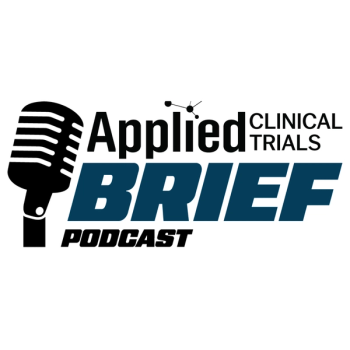Clinical trial planning by the numbers
- 80% of trials fail to meet enrollment projections.
- Over 33% of study sites underenroll patients; some enroll zero.
- 75% of modern clinical studies are outsourced to CROs.
- 30% of patients drop out before study completion.
- Over 85% of trials fail to retain sufficient participants until the end.
The growing market for clinical trial rescue services—specialized services for rectifying trials that are failing or at risk of significant delay—is a clear indication that something is amiss with the planning approach to clinical research.
The most common challenge reported in studies requiring interventions is a failure to meet enrollment timelines. Over 80% of clinical trials fail to meet enrollment projections. More than a third of study sites underenroll patients and it’s not uncommon for a site to enroll zero patients.
What is causing such misalignment between expectations and reality?
It can’t simply be a case of Benjamin Franklin’s maxim come to life (“a failure to plan is a plan for failure”). As we know, a lot of effort and preparation goes into research studies, but results in the field—or lack thereof— suggests that too often pre-study planning is founded on insufficient data and/or inadequate techniques. The inputs employed in calculating enrollment don’t sufficiently reflect the actual qualities of patients and sites.
One increasingly successful approach to bridge this gap is through the significant incorporation of real-world data in the study planning process.
Recognizing complexity
Clinical trials have grown more complex over the past decade, with innovations in formats, endpoints and techniques. To navigate the intricate requirements of modern therapeutic developments, the majority of studies, 75%, are outsourced to contract research organizations (CROs).
Yet patient recruitment and retention remain critical challenges. Approximately 30% of patients drop out before the trial ends, and over 85% of clinical trials fail to retain sufficient participants until study completion.
With enrollment and retention problems often delaying the start or derailing a clinical trial, the dreaded rescue study has become more prevalent.
The need to bring in specialized expertise for root-cause analysis and corrective action is costly, and typically comes with delays in regulatory filing, market entry, and ultimately, the delivery of new therapies to patients.
Much of this difficulty stems from a planning process that lacks the rigor and precision data to match the complexity of the studies, particularly in regard to planning for site selection and enrollment.
Applying real-world patient data
Investigative sites are typically selected for consideration based on a range of parameters. These include staff qualifications and experience, facilities and equipment, site profile and timelines, patient population access, and past performance.
While most technology-based solutions focus site selection on past performance and current capabilities, often lacking is an accurate assessment of patients who would be suitable candidates for the study in question. And patient population is often the most difficult factor to accurately assess.
To address this challenge and bring greater proactive planning to the initiation of clinical trials, sponsors and CROs are leveraging de-identified real-world data (RWD)—health information collected outside of clinical trials, including electronic health records (EHRs), medical claims, patent registries, and wearable devices.
When sourced from an array of healthcare settings and systems, and properly validated, RWD can offer timely and accurate assessments of eligible patient populations. It provides a valuable window for assessing factors such as sites not previously considered for inclusion and which patients are less likely to drop from a study.
In this way, RWD represents a critical tool in the fight against wayward studies destined for rescue.
Data-driven planning
Key to the successful application of RWD in clinical trial planning is ensuring quality of the underlying data.
While artificial intelligence (AI) with sophisticated machine learning and natural language processing models make it possible to curate oceans of unstructured RWD, the process requires careful execution. AI-driven models and outputs need active engagement and oversight by qualified teams of medical professionals, clinicians, and data scientists.
With a sophisticated, multi-faceted effort employing AI technology and human expertise, RWD becomes an invaluable resource in advancing clinical trial design and execution. It allows sponsors and CROs to test for potential study participants from de-identified patient records contained in EHRs against study-specific eligibility criteria, a data-first approach to clinical development.
Data-driven planning aids in the design of feasible clinical trials from the outset, by simulating enrollment before the study actually begins. Considering the burgeoning costs of clinical development and rescue studies, this proactive paradigm shift represents a critical efficiency for the pharmaceutical industry.
Better results with RWD
Ongoing patient recruitment and retention challenges often delay or derail clinical trials, leading to expensive rescue studies and missed opportunities.
Yet a significant number of the problems that typically cause study delays can be avoided or mitigated with more sophisticated study planning. Specifically, the deliberate application of RWD is proving increasingly vital, shedding light on the viability of potential study sites and patient populations.
In an era of complex research and heightened competition for limited trial sites and study cohorts, the access to timely, accurate real-world information on patients can influence a critical difference between a study that becomes mired in problems and one that meets success.
In this way, AI-driven access to RWD is quietly powering a path to better healthcare.
Ashley Daigneau is head of clinical trials at Verana Health, where she oversees the strategy and execution of innovative clinical research solutions leveraging real-world data. Ashley has more than 15 years of experience supporting the development of real-world evidence strategies and overseeing clinical study execution.





